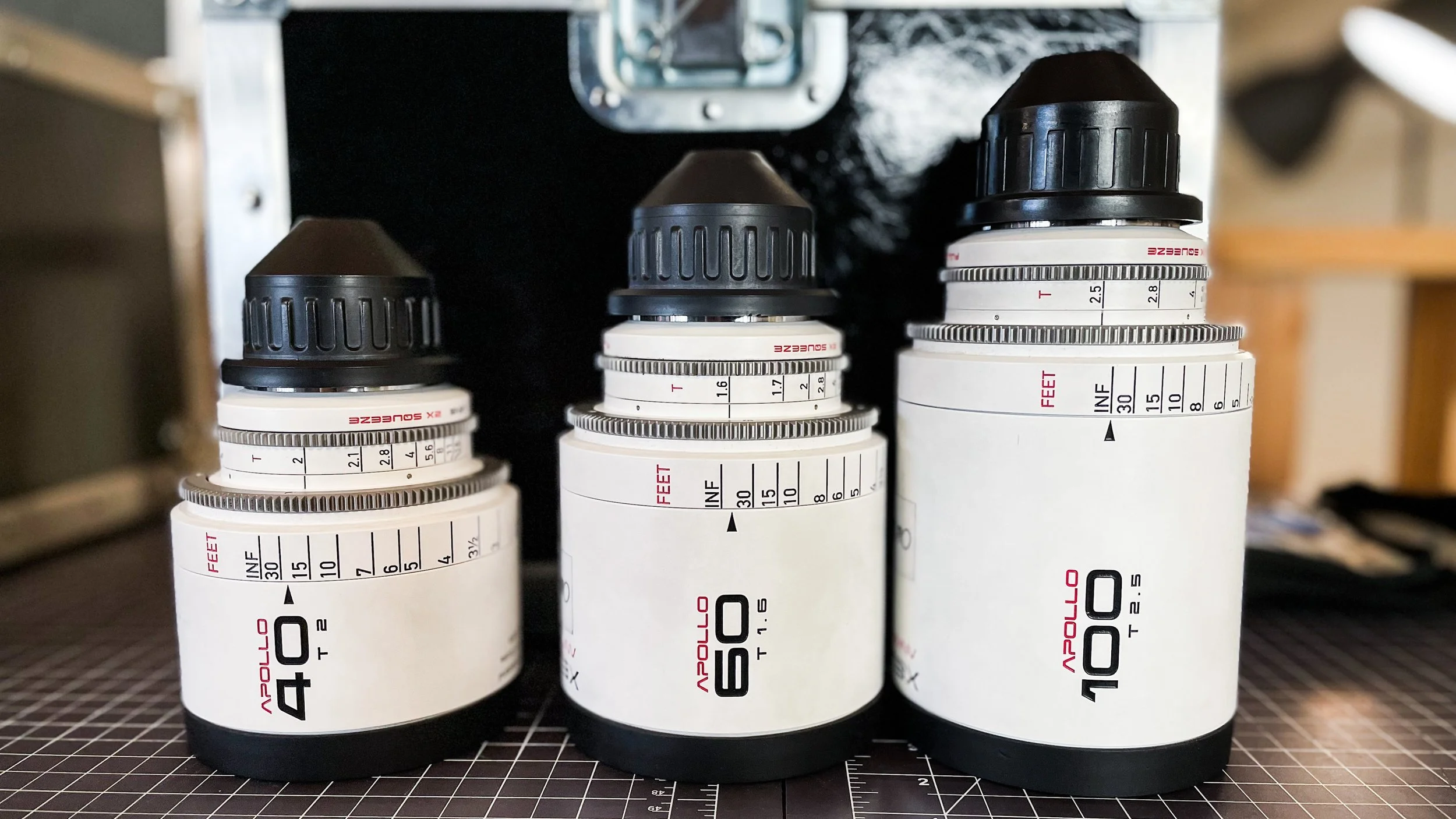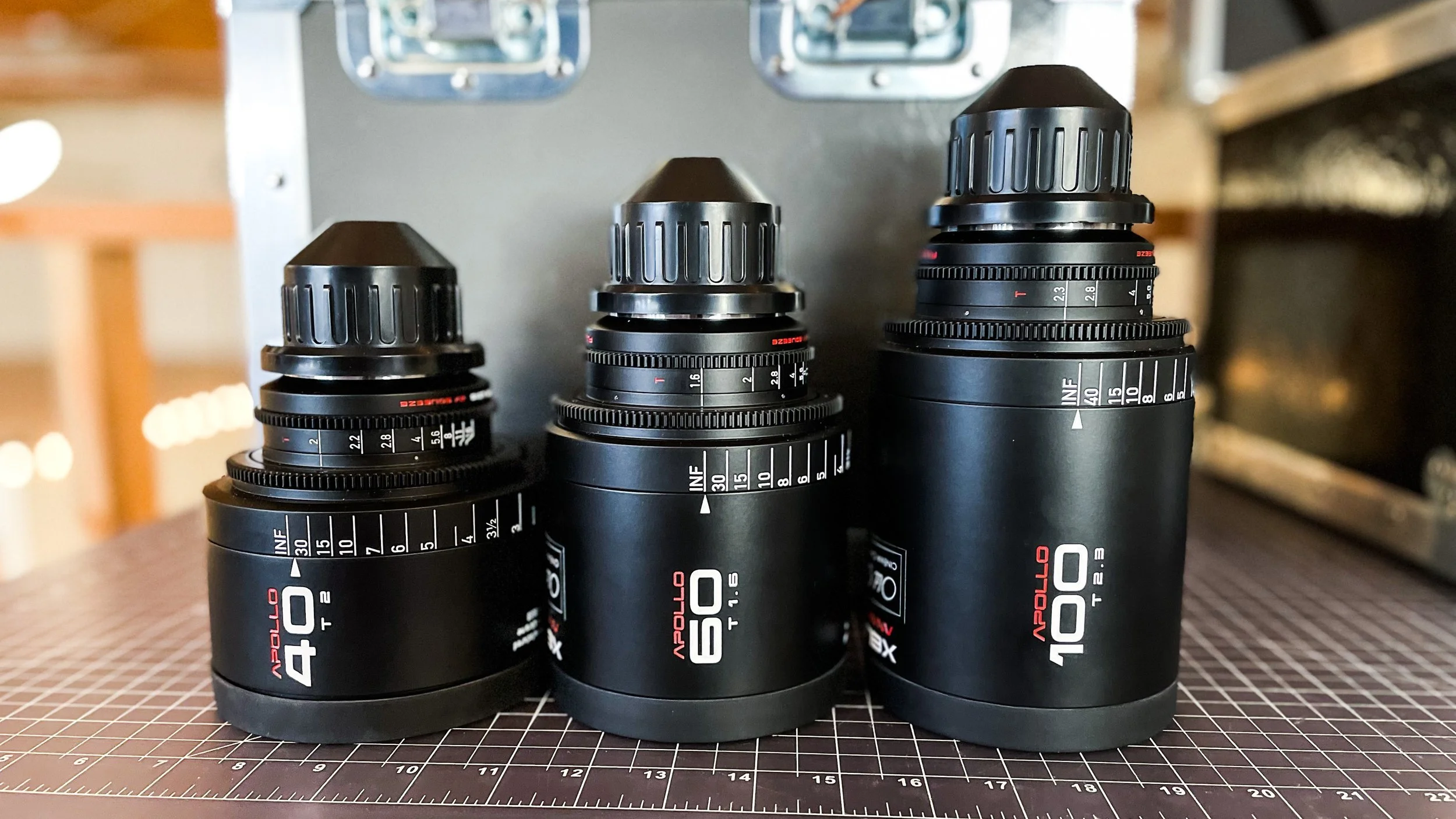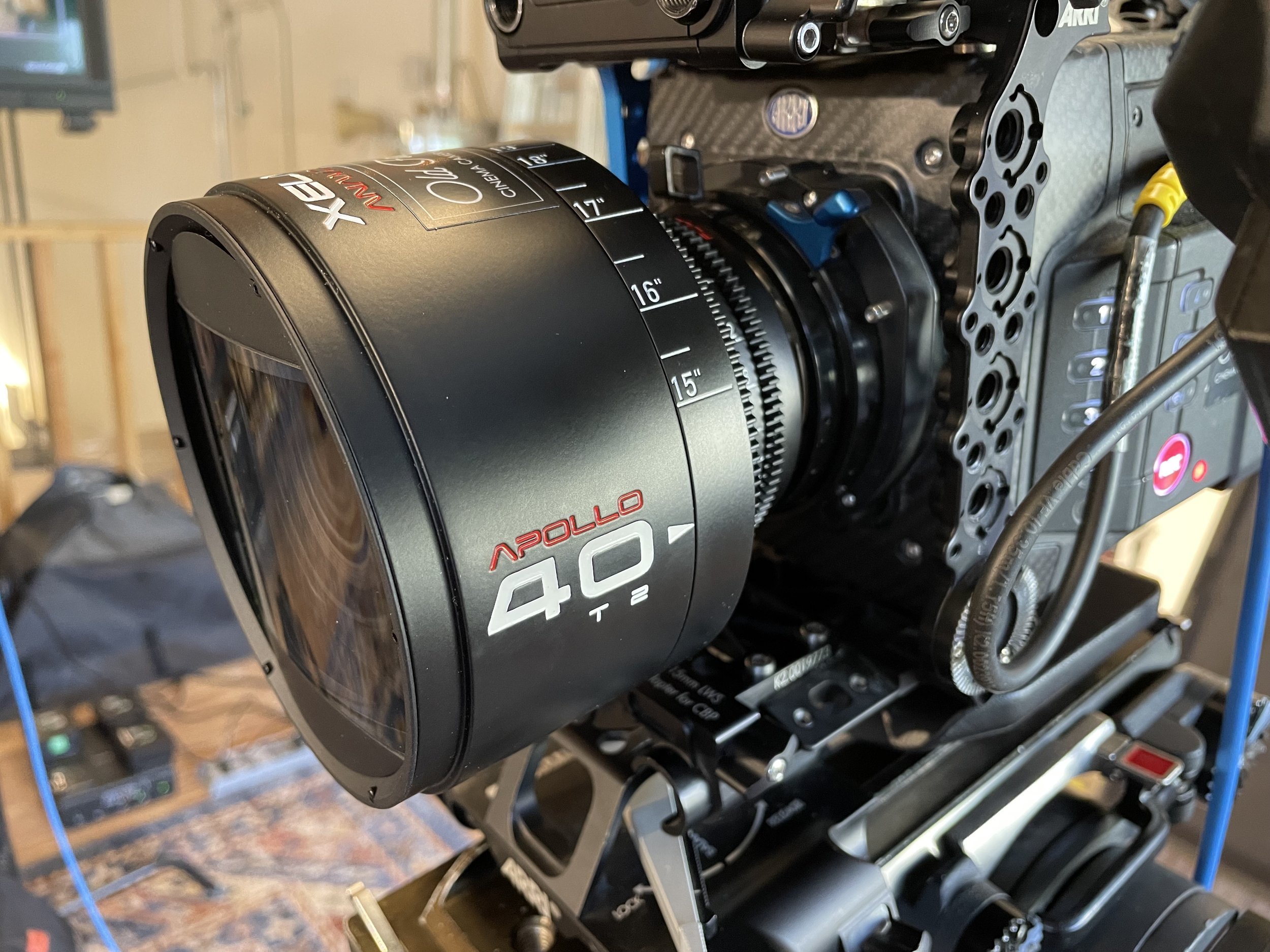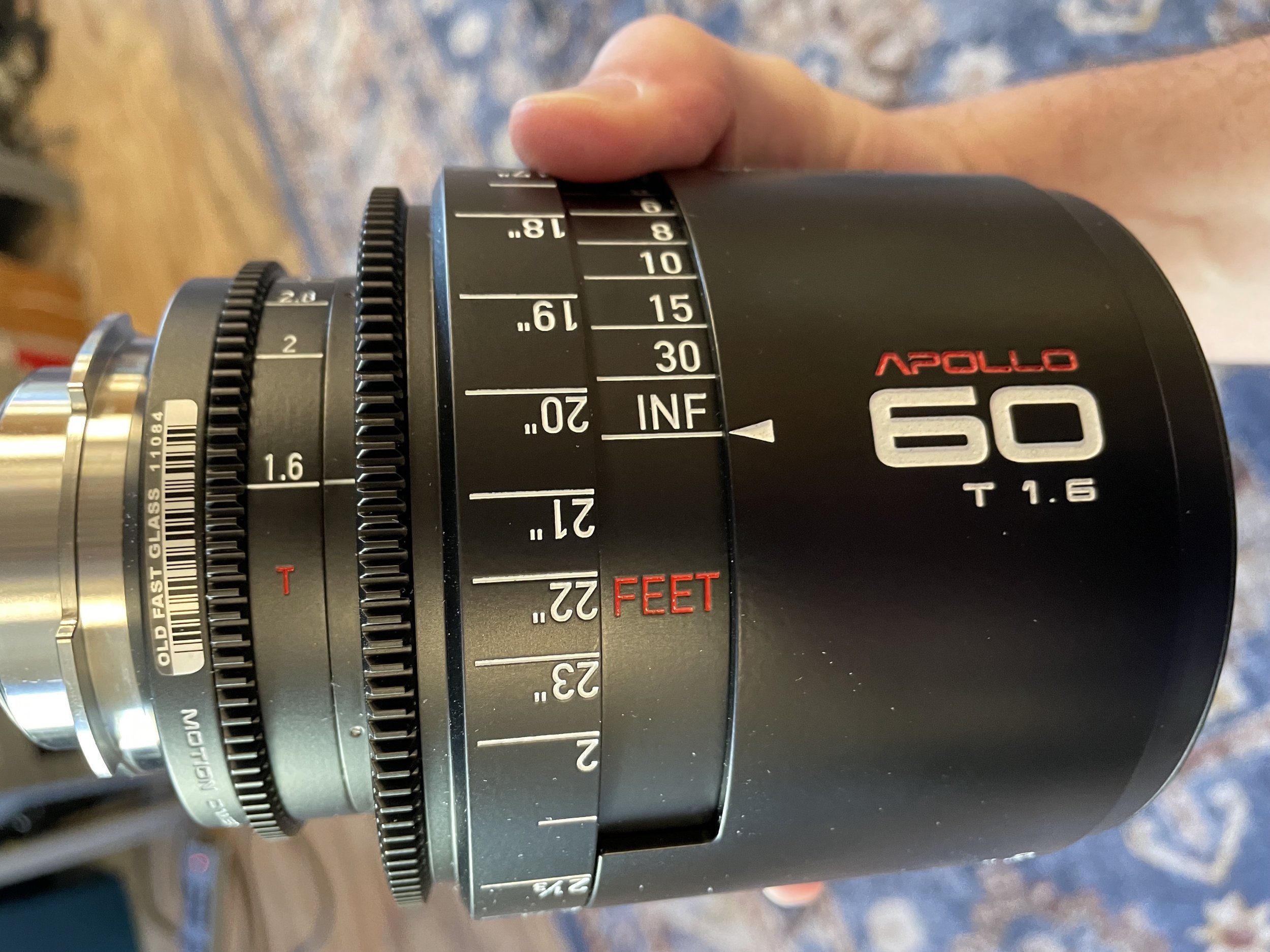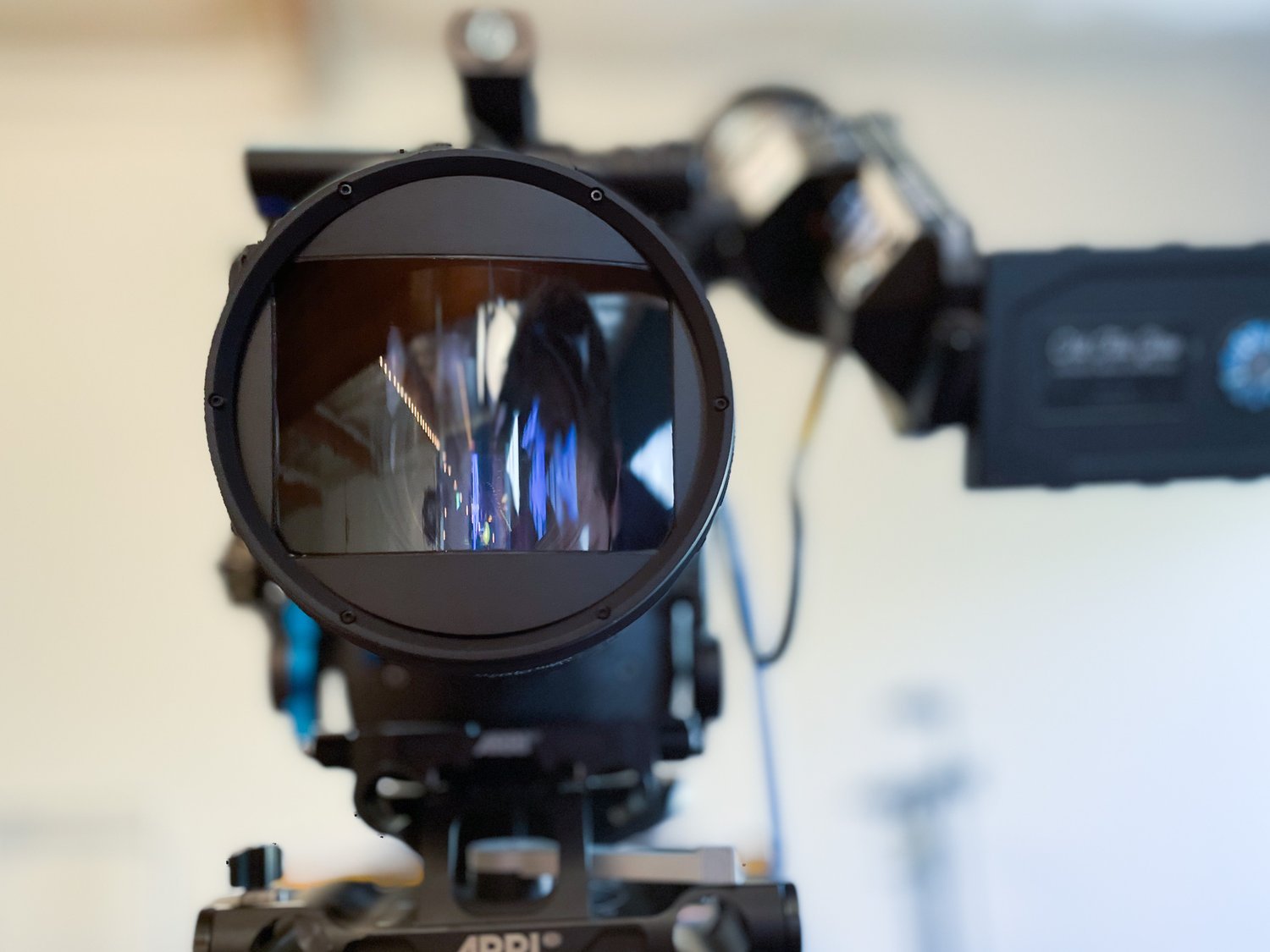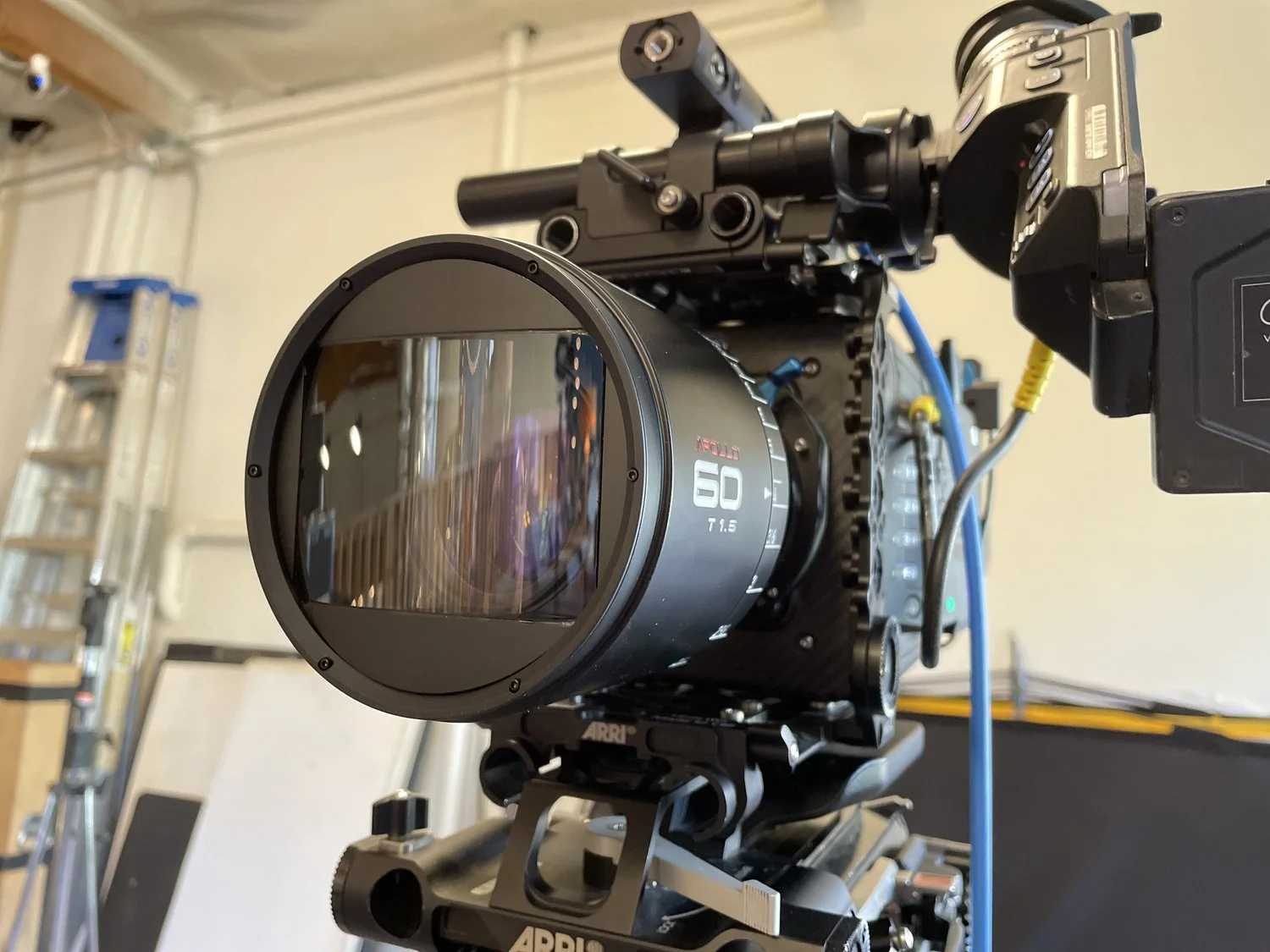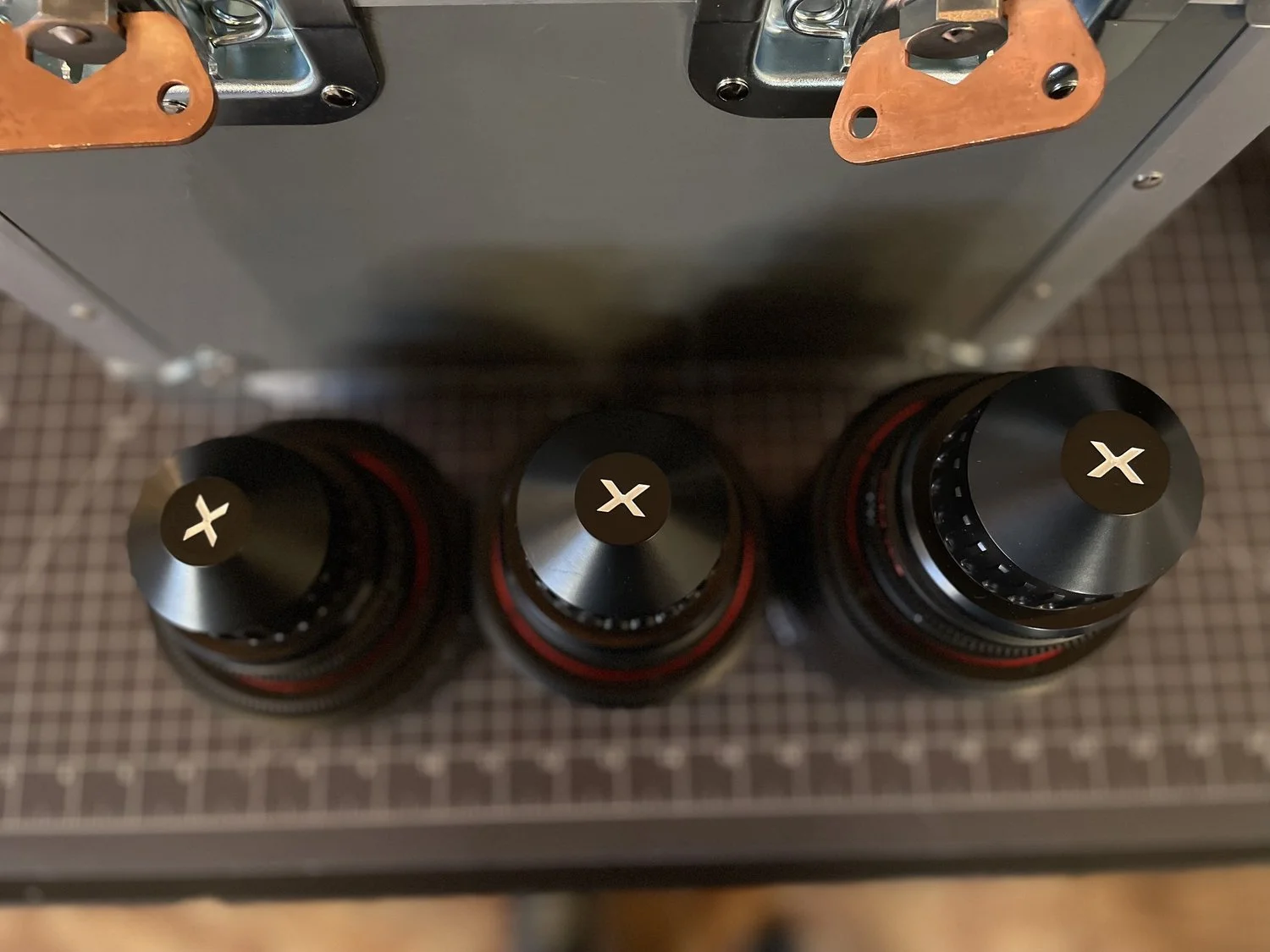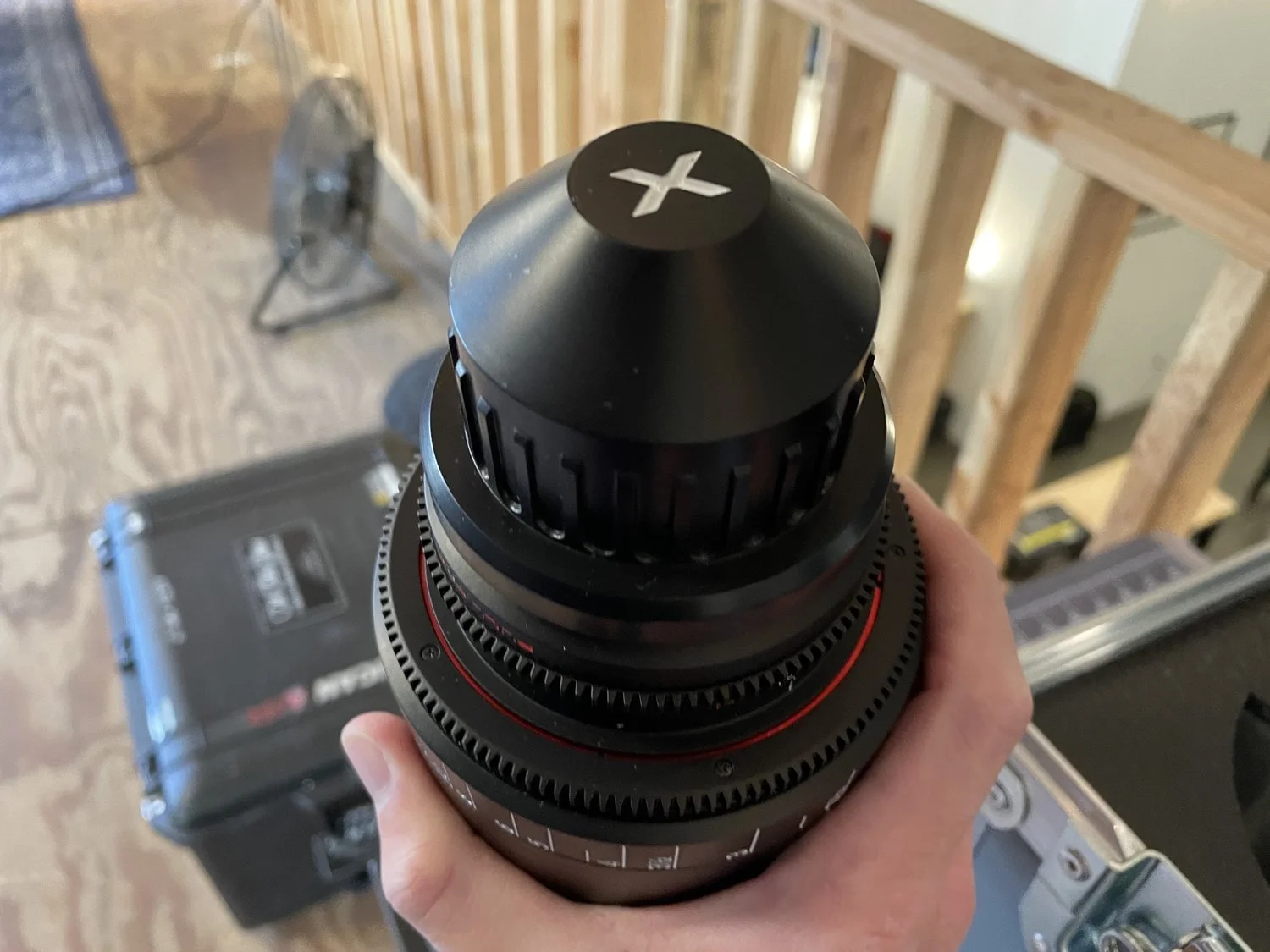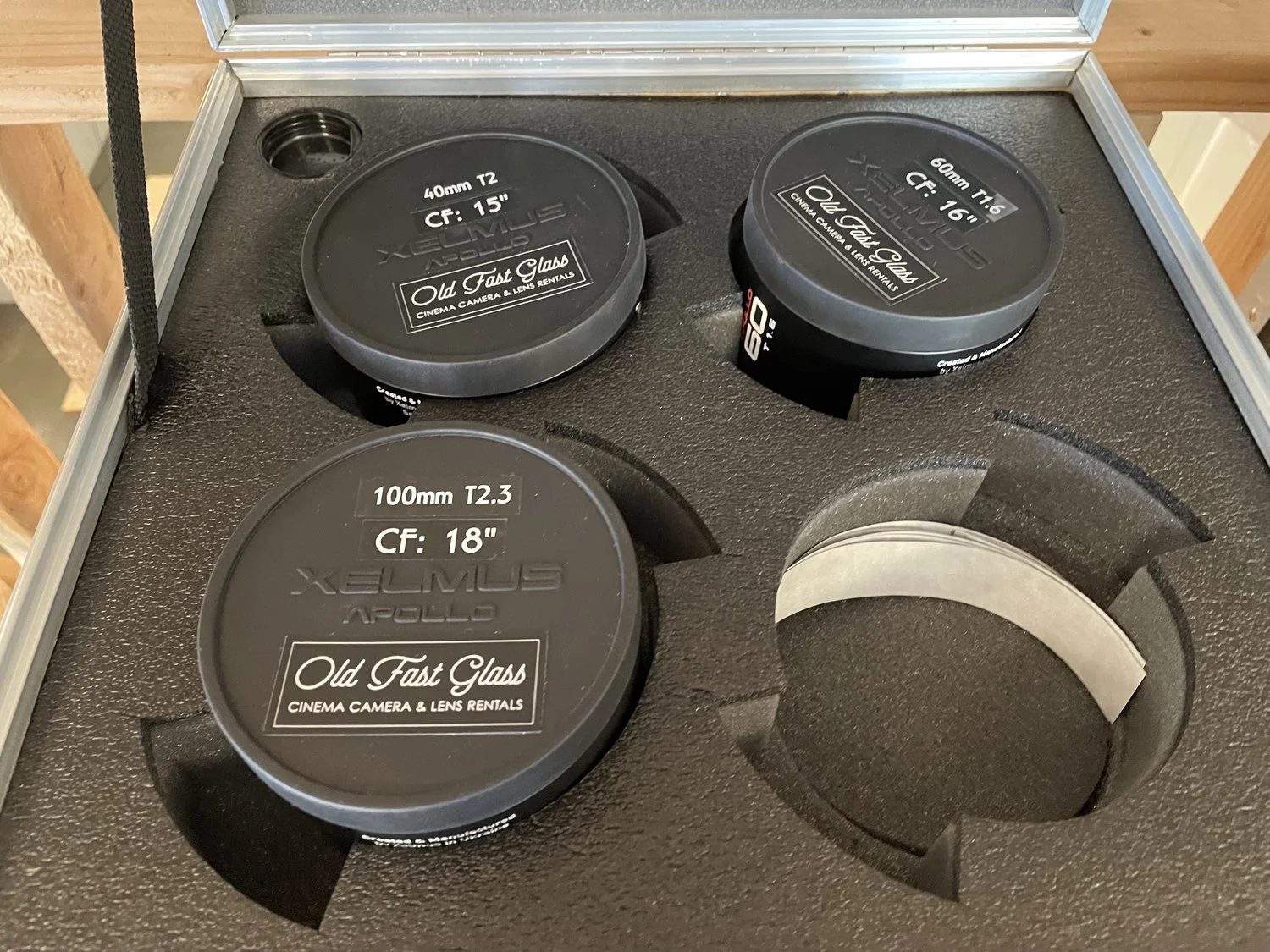Arri Alexa Mini LF - Xelmus Full Frame Anamorphic Lens Test
Xelmus Full Frame Anamorphic Lens Test.
I recently shot a test of the Xelmus APOLLO Full Frame anamorphic lenses. Thanks to Old Fast Glass for supplying the equipment for this test, and to my wife Monica for sitting in. Footage was captured on Arri Alexa Mini LF in 2.0x Squeeze. This video has a fair bit of compression due to the fact the footage is from Frame.io's Camera 2 Cloud service. Next test I will be sure to bring a hard drive with me to store the full resolution capture.
Timestamps
40MM V1 0:00-04:05
40MM V2 04:05-05:56
60MM V1 05:56-07:07
60MM V2 07:07-09:24
100MM V109:24-12:41
100MM V2 12:41-15:23
Set of 3 Version 1 Xelmus Apollo Anamorphic lenses (40mm, 60mm, 100mm) with white lens housing.
Set of 3 Version 2 Xelmus Apollo Anamorphic lenses (40mm, 60mm, 100mm) with black lens housing.
My initial thoughts were focused on the build quality, which I found to be excellent. They are relatively small lenses, and surprisingly lightweight. The focus gears were buttery smooth, and the housing felt robust and well engineered. What I couldn’t believe when I first saw them was their minimum focus distance.
“…They are probably the closest focusing of any anamorphic lenses. While most anamorphic lenses have a close focus distance of around 3 feet, Xelmus lenses all focus between 15” to 18”, which is incredible, and makes diopters almost unnecessary.”
- Mark LaFleur, Old Fast Glass
I tested out the two versions of the lenses that were in house at Old Fast Glass. Mk 1 is the white housing and Mk 2 is in a traditional matte black housing (which I believe was a special request when the owner, Mark, ordered the new versions).
A Mk1 Xelmus Apollo Anamorphic lens mounted on an Arri Alexa Mini LF.
The 40mm, for as wide of a focal length as that is, was not nearly as large or heavy as I was expecting based on previous wide angle anamorphic lenses I’ve shot with and tested (see my previous lens test here).
While the 40mm doesn’t entirely cover the Full Frame sensor, with an image area of 33x29mm, it’s still a very impressive wide angle lens, especially on a full frame camera.
They have all the qualities you would expect from an anamorphic lens, a pleasing barrel distortion, oval bokeh, and the classic anamorphic lens flares.
Wide open, they bloom and flare beautifully. I found that the contrast on the coatings was really pleasant, veiling glare was never a huge issue, and their performance stopped down to a t/2.8 was fantastic. Overall I found their flares to be really nice, very classic, but not as overwhelming and in your face as what I’ve seen some other lenses I’ve shot with like the Lomo anamorphics.
100MM Mk2 Rainbow Flare, with the aperture set wide open.
Of the full frame anamorphic lenses I’ve tested, these are so far my favorite set. Their close focus ability alone sets them apart from any other anamorphic lenses in their class. They are lightweight, compact, well built and produce a beautiful image with just enough character to not feel stale or boring.
One concern I would keep in mind if you are looking to buy a set, or add to an existing set is that there is a slight, but noticeable color shift between the coatings on the Mk1 and MK2 versions. Monica noted that the MK1 versions have a slight magenta cast and the MK2 to have a slight green cast. For me, the most noticeable visual difference between the coatings came when looking at the 100MM. As you’ll see in the test footage, the MK2 has a very pronounced rainbow flare compared to the more controlled flare on the MK1 version.
I spoke with the owner of OFG, Mark LaFleur about the lenses afterwards and he said they would be adding some more focal lengths to their set soon, a 50MM, 75MM and 135MM. Xelmus is also currently developing a 32MM focal length, however it will only cover a Super 35MM sensor. I look forward to shooting with these lenses, and testing out the next set of focal lengths when they are available!
The MK1 lenses have big, saturated lens flare character, slightly more distortion on the 40mm and 100mm, and slightly softer edges. The new MKII lenses feature new optical designs and a different lens coating formula. There are slight improvements to sharpness, distortion, and edge performance, and lens flares are more subtle, and very similar to some of our favorite vintage anamorphic lenses. Also, the 100mm is slightly faster at T2.3 vs. T2.5 for the MKI. The lenses are slightly heavier due to the larger optics.
- Mark LaFleur, Old Fast Glass
Tech specs from Xelmus’s website.

